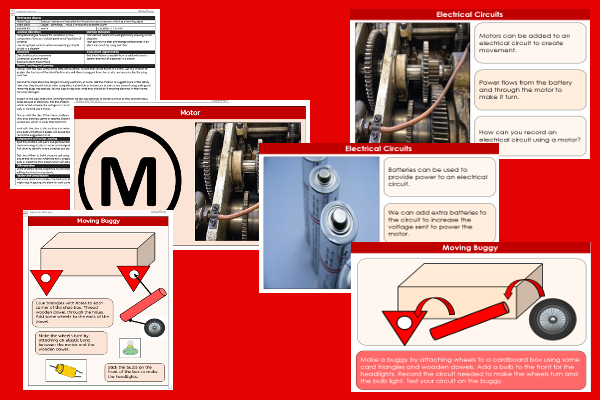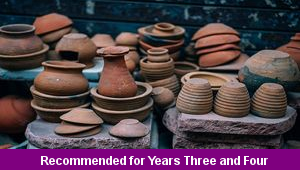Lesson Six – Using Motors

This science teaching pack for Key Stage Two gets the children to devise, record and test different electrical circuits that use motors to complete a range of specific functions such as powering a toy buggy.
The class can explain and illustrate how to follow a circuit diagram make a model of a toy buggy that incorporates an electrical circuit to produce light and movement.
Download this teaching pack including a lesson plan, classroom activities and an interactive presentation to devise, record and test different electrical circuits that use motors to complete a range of specific functions such as powering a toy buggy
Activities in this teaching pack include display posters to identify symbols that can be used for electrical components in circuit diagrams and a worksheet to select and record how to build a buggy using a motor and a bulb as part of an electrical circuit.
The interactive presentation can be used to explore how to devise and test different electrical circuits using motors to complete a range of specific functions.
This lesson is part of a science scheme of work to get the children to devise and construct different electrical circuits that can be used to control electrical devices for a range of specific functions in a family home. There are teaching activities for shared learning, differentiated worksheets to support independent learning and interactive presentations to introduce concepts and key skills.
-

Classic Animal Stories
Investigate the structure and content of classic works of fiction by significant authors with animals as the main characters
-

Cities, Towns and Villages
Research and present the history of a range of different buildings and people that are part of the local community using a school exhibition
-

Recycling
Research and present some of the benefits and disadvantages that can be produced when recycling different materials at home and in school
-

Viking Pots
Develop and refine a range of different art and design techniques when working with clay to make pots that represent Viking culture and traditions
